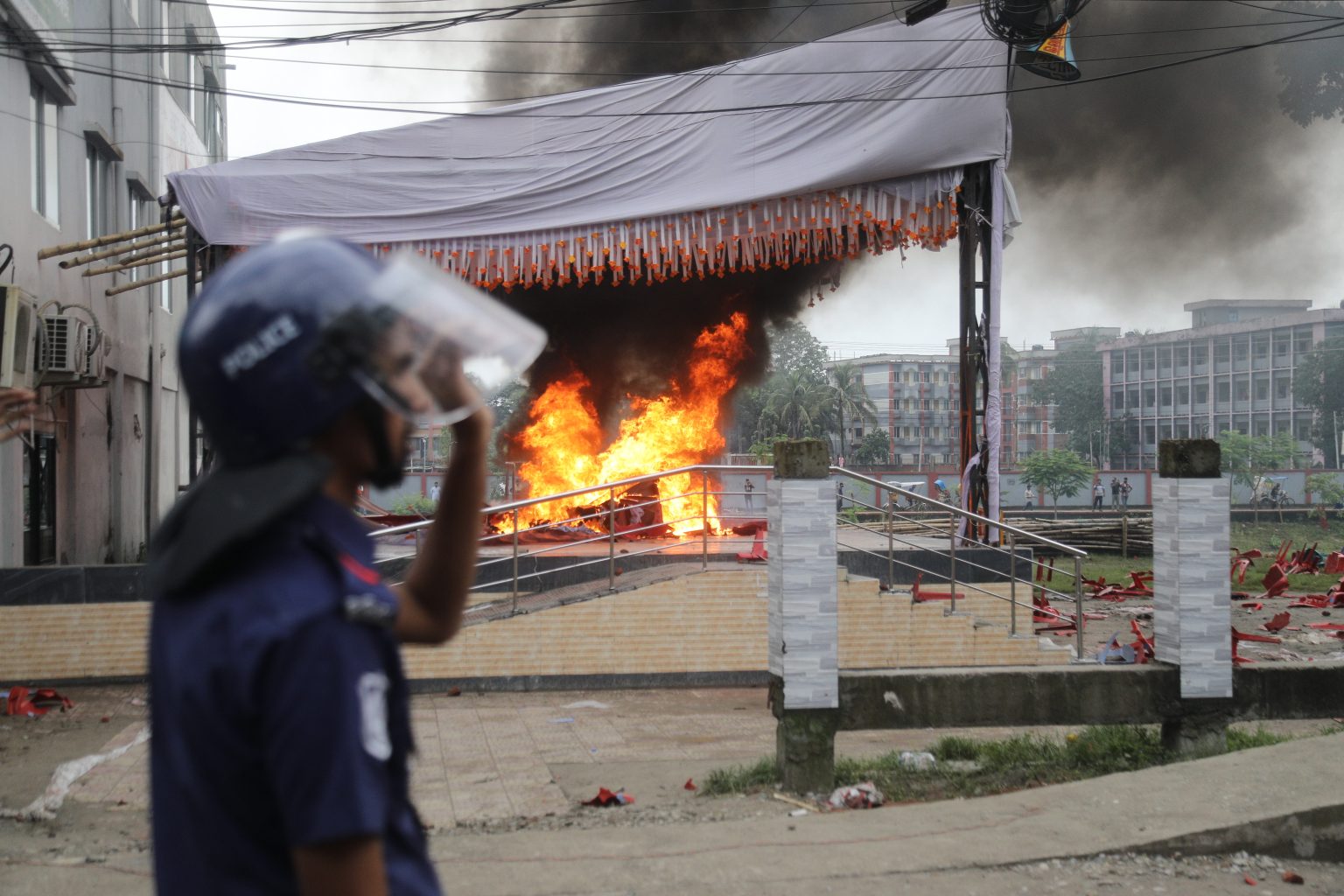The violent clashes in Gopalganj on July 16, which resulted in at least five deaths and numerous injuries, represent a complex conflict rooted in political tensions, historical rivalries, and misinformation. Evaluating who is to blame requires a careful look at the roles played by the Awami League, the National Citizen Party (NCP), law enforcement agencies, the interim administration, and local communities.
The violence erupted during a rally organised by the NCP to commemorate the first anniversary of the 2024 uprising that led to the ousting of prime minister Sheikh Hasina. The rally was met with fierce resistance from Awami League supporters, who reportedly attacked NCP leaders, vandalised the venue, and set fire to property.
The situation escalated, involving police and army forces who used tear gas and live ammunition. A curfew was imposed to restore order. Reports confirm at least five deaths, although some unverified sources on social media suggest the number may be higher.
Tensions had been inflamed by rumours, spread the night before the rally, that the NCP planned to demolish the mausoleum of Sheikh Mujibur Rahman, a revered national figure and the father of Sheikh Hasina. Although unverified, these rumours triggered intense emotions in Gopalganj, an Awami League stronghold. The interim government condemned the violence and blamed Awami League activists, particularly from the banned Chhatra League, promising accountability.
Awami League supporters are accused of initiating the violence, motivated by perceived threats to the legacy of Sheikh Mujibur Rahman. Their emotional connection to Gopalganj, combined with their history of using force to suppress opposition, made them highly reactive. Although their actions directly triggered the confrontation, the role of misinformation in prompting these responses complicates their sole culpability.
The NCP, composed mainly of youth leaders from the 2024 uprising, organised the rally in Gopalganj knowing it would be politically sensitive. Their decision to proceed despite volatile rumours and potential backlash appears strategically bold, if not reckless. While they had the right to assemble peacefully, their failure to clarify or counter misinformation may have contributed to escalating tensions. Still, the violence they faced was disproportionate, and they were ultimately victims of an aggressive assault.
Security forces intervened with tear gas and live ammunition, which resulted in civilian deaths. While their stated goal was to restore order, the use of lethal force raises serious questions. Bangladesh’s security forces have a documented history of excessive force, particularly during the 2024 protests. Although the interim government praised their actions, some social media posts accused them of unprovoked shootings. These claims remain unverified but merit independent investigation.
The interim government, led by Chief Adviser Mohammed Yunus, condemned the violence and appeared to side with the NCP in attributing blame to the Awami League. Their actions reflected a desire to maintain stability and project authority. However, the government’s failure to manage the spread of rumours and to ensure that security forces used restraint contributed indirectly to the escalation. Allegations that they orchestrated the violence or ordered the shootings remain speculative and unproven, though such claims have gained traction in politically polarised narratives.
Local communities, particularly those aligned with the Awami League, played a role in escalating the situation. Fuelled by the rumour of an attack on the mausoleum, many residents joined in the confrontation. While their actions were not centrally organised, the rapid spread of misinformation and the emotional resonance of the issue created a combustible environment. Their involvement underscores how political polarisation and unchecked rumours can trigger violence.
The Gopalganj clashes cannot be pinned solely on one group. The Awami League’s aggression was the immediate trigger, but the NCP’s provocative choice of location and failure to address sensitive rumours contributed to the tensions. Security forces’ use of deadly force raises serious concerns, while the interim government’s inaction in preventing or de-escalating the situation shows a lack of foresight. Misinformation played a critical role in inciting violence, revealing systemic issues in how information is handled in a polarised society.
Bangladesh’s political landscape remains deeply divided. The rivalry between the Awami League and opposition groups, intensified after the 2024 uprising, has created a fragile environment where trust in institutions is low, and violence can erupt easily. Reports by the United Nations on prior protests point to long-standing patterns of state violence and suppression that have not been fully addressed. The Gopalganj incident is a symptom of this larger instability.
The violence on 16 July reflects the need for accountability on all sides. The Awami League must be held responsible for inciting violence, the NCP must acknowledge its missteps, security forces must be investigated for possible excessive use of force, and the interim government must take stronger steps to prevent misinformation and ensure non-violent political engagement. An independent investigation would be a critical step towards transparency, justice, and preventing future bloodshed.
Some claims, particularly from unverified social media sources, should be treated with caution. Allegations of a higher death toll or government-orchestrated violence lack corroboration. A deeper, transparent investigation is needed to establish the facts and uphold accountability.


